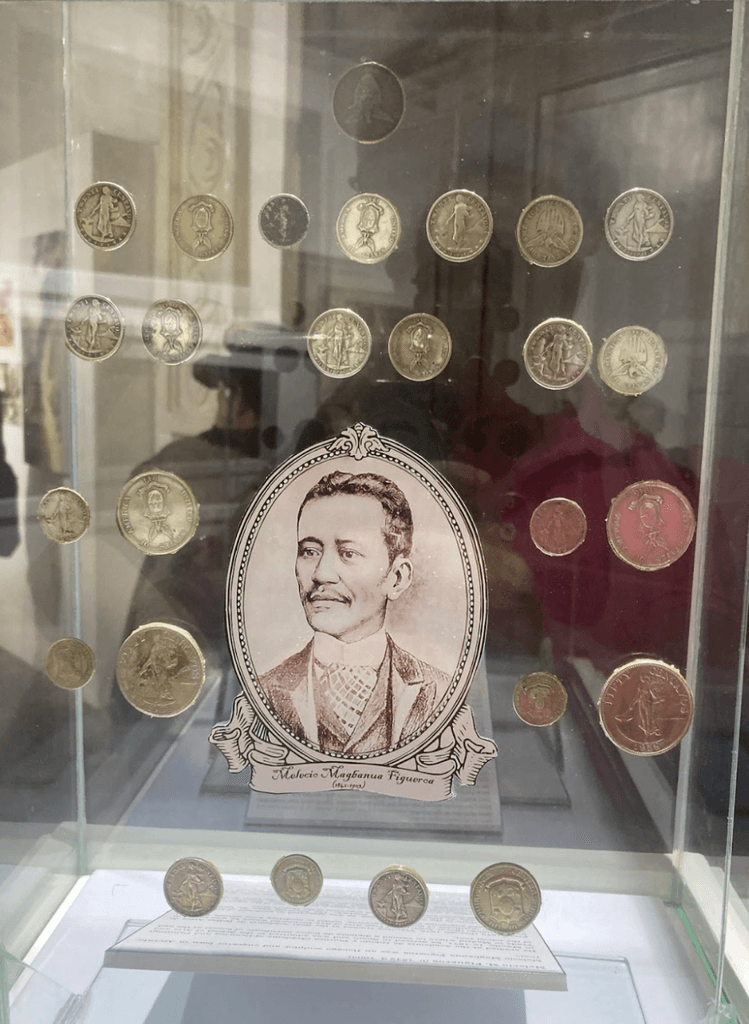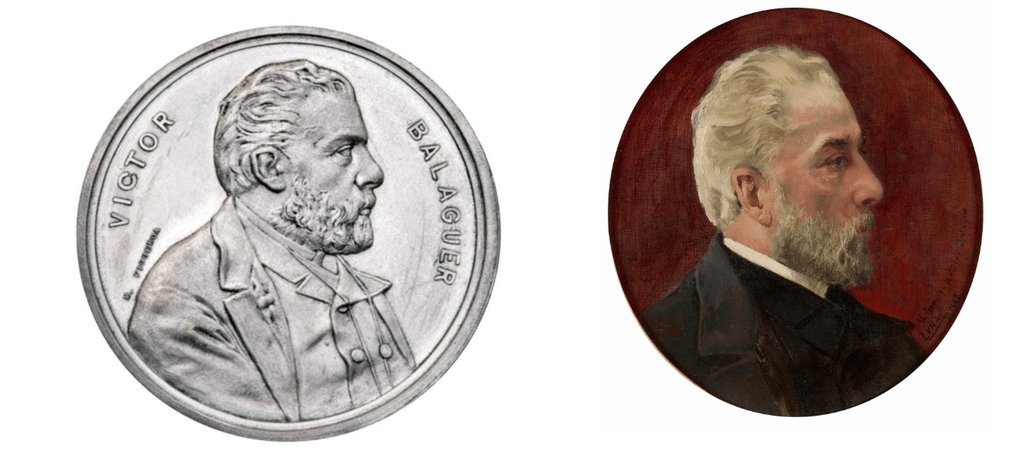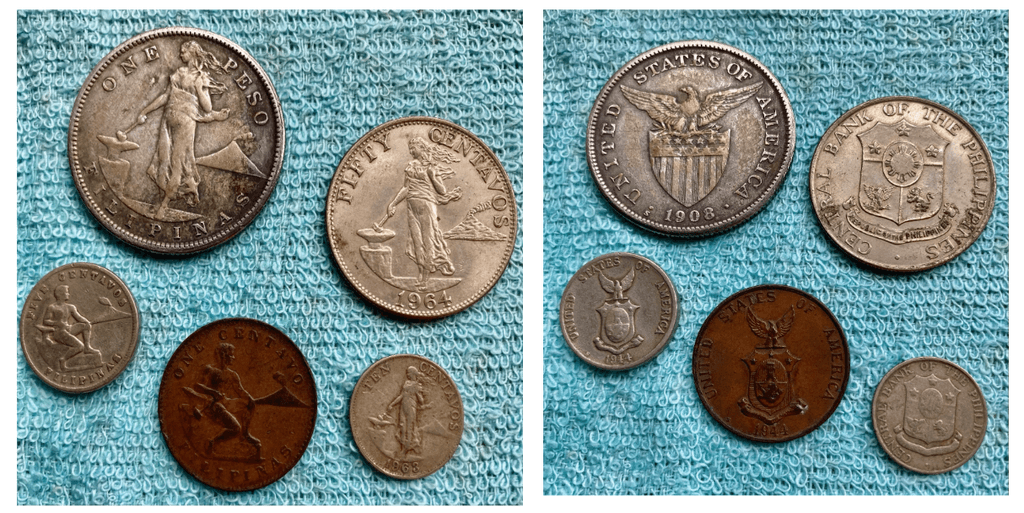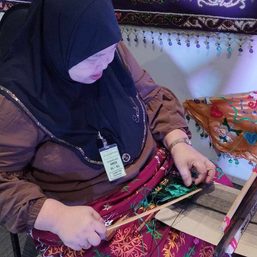SUMMARY
This is AI generated summarization, which may have errors. For context, always refer to the full article.
![[Ilonggo Notes] The foremost Filipino engraver, sadly unremembered, needs to be given his due](https://www.rappler.com/tachyon/2024/03/Figueroa-.jpg)
Did you know that one of the most recognizable pieces of Philippine art could fit in your pocket, and that its designer was an Ilonggo? I’m referring to the series of coins that were in wide use from 1903 until the ’80s, of various denominations – one peso, and 50, 20, 10, five, and one centavo coins.
The designs, by Melecio Magbanua Figueroa, depict on one side a lady, sometimes called “Filipinas.” She has a hammer, striking an anvil, while Mayon Volcano smolders in the background. The lady appears on coins 10 cents and above, while on the lower denomination ones, a male is shown sitting with an anvil. The “Filipinas” coins were of a silver mix (hence, whitish) compared to the brown guy, where copper was used. When Figueroa was designing, he looked to his only child, Blanca, as a model (she was just 10 years old in 1902) and imagined her as an adult. Unfortunately, he did not live to see the coins in general use, as he died in 1903.
When I was growing up in the ’60s, the silver coins were often referred to as “genuine,” and were favored for use in wedding ceremonies as the “arras” signifying material prosperity while the one and five centavo coins were used as “batano” (tokens or markers) for childhood games. When sparks of Pinoy nationalism hit in the ’70s, designs were replaced with Philippine heroes and heroines. Through the decades, the reverse side of the coins changed – both designs and text, with the American eagle and “United States of America” eventually giving way to “Central Bank of the Philippines.”

Designing these coins alone would have easily made Figueroa’s reputation, but there is more – as revealed by researcher and former Director of Public Affairs of the Limbagang Pinpin Museum, Gerard Wassily Clavecillas, in a lecture given at the UPV Performing arts hall last February 12. The talk was sponsored by the OICA (Office of initiatives for Culture and the Arts) of UP Visayas, and the UP President’s Committee for Culture and the Arts.
Figueroa was born in Arevalo in 1842. His mother, Gabriela Magbanua, died early. His father, Rufo, relocated to Sorsogon, to be with family, who were known artisans. As a child he carved wooden toys. In Manila he studied at an art school founded by Damian Domingo while moonlighting as a watch repairer. In 1871, with the support of a high-ranking Spanish official of the Manila Ayuntamiento (city hall), he was awarded a scholarship to study engraving in Spain. According to the late psychiatrist-historian Luciano PR Santiago, who has written extensively on Figueroa: “Unique in the history of art in the Philippines is the private scholarship to Spain granted in 1871 by Don Francisco Ahujas, to a native artist, Melecio Figueroa…. The only example of a private scholarship abroad offered by a colonialist during the three centuries of Spanish rule in the Philippines…”
Figueroa studied at the Escuela Artes y Officios where, despite late entry, he still won honors for his work. After a year he entered the Real Academia de Bellas Artes de San Fernando in Madrid, where he received awards of distinction. The Academia (today known as the Faculty of Fine Arts of the Complutense University in Madrid) is the top school for fine arts in Spain; students there have included Picasso, Dali, and Pinoy notables such as Luna, Hidalgo, and Amorsolo. He was commissioned to make busts and medals for European royals, including that of the Spanish King, Alfonso XII. Unfortunately, his patron Ahujas (who had been appointed to the powerful Council of the Philippines in Madrid) died in 1876; Ahujas’ daughter continued the scholarship until the end of the year, and Figueroa’s colleagues in the Academy also did their share — a caretaker at the academy let him use one of the rooms for his lodging – while the struggling artist did menial jobs and repaired watches to make ends meet.
A year after, with appeals by friends and supporters in the Philippines as well as the Academy, Figueroa was awarded another scholarship, this time from the central government in Manila, for another three years. In 1879 the Academia chose him, after competitive examinations, as its scholar in engraving and was sent to Rome. He was the only Indio Filipino to be so honored by his alma mater. While in Rome, he garnered three more prizes.
Santiago writes that by the time he returned to Madrid, he was a celebrated artist. For the Grand Philippine Exposition at the Spanish Capital in 1887, he was commissioned to design the award medals and appointed a member of the board of judges, the only person from any of the colonies. The Figueroa-designed medals created such a stir that the Queen Regent awarded him another four-year pension in engraving (1888-1892).
Thus, Figueroa was the only Philippine artist during the colonial period to have won a scholarship four times; one private and three government for a combined period of over 15 years. The prizes he won in competition during his time in Spain and Rome surpass those of any other Filipino artist’s, Luna included. Two of the medals he designed are in the collections of the Prado Museum: the medals awarded for the 1887 Exposition and the Victor Balaguer medal – the latter is the only one that Figueroa both designed and personally struck. Interestingly, the Prado also has a Luna portrait of Balaguer featured in its catalogs and website; here it is acknowledged that Luna used the Figueroa medal as the model for the portrait.

In 1888, Figueroa married Enriqueta Romero of Madrid. Three children were born in Madrid but died early. He received another silver medal in engraving at the Barcelona Exposition. In 1891, he received news that his father’s health was declining and he requested to return. His wife was pregnant when they sailed for the Philippines early in 1892. The child, Blanca, was born during the voyage to Manila.
With his credentials, Figueroa took Manila by storm. La Ilustracion Filipina, a prestigious weekly, featured him and his portrait graced the cover of the May 21, 1892 issue. The Manila Escuela de Dibujo, Pintura y Grabado – which was later to become the College of Fine Arts of UP – appointed him professor of engraving. He was its only Filipino Malay member of the faculty. The others were either Peninsulares or Criollos who had trained in Europe. In 1893, he was appointed “Grabador Primero” of the Manila Mint. In 1894-95, in addition to his engraving work, he created bust sculptures and portraits, as mentioned in publications then, but none of these are known to exist today.
In Madrid he was a member of the Circulo Hispano-Filipino and the Associacion Hispano Filipina both of which agitated for reforms in the colony. Certainly he was known to national heroes Jose Rizal, MH del Pilar, and Graciano Lopez Jaena; the latter mentioned Figueroa in a speech he gave at a dinner in honor of Juan Luna and Hidalgo.
After independence from Spain was declared, Figueroa was appointed a member of the Malolos Congress (representing Iloilo) and was one of the signers of the Malolos Constitution that established the First Philippine Republic (1898). However, independence was short-lived, as America took over the reins after purchasing the islands from Spain and winning the Philippine-American war. Nevertheless, he won a 1901 competition to design the coins, which were later known as the “Conant.” The symbolic figure was a thinly clad statuesque young woman – his daughter Blanca, imagined as an adult. Incidentally, Blanca Figueroa Opinion lived until her ’80s, and was present at the opening of the Philippine Central Bank Museum of Money in the 1970s.

Thus, while the coin series is undoubtedly the best known of his works, Clavecillas’ research uncovered the whereabouts of a rare Filipinana treasure: the only work that was designed and personally struck by Figueroa – the Victor Balaguer medal, of which three are extant. The silver one in the Prado, and one each of copper – one in the Victor Balaguer Museum, and the other in a private collection in California.
Art historian and painter Fabian de la Rosa wrote of Figueroa: “He is the only Filipino engraver who had developed the art of engraving from its purely artistic aspect with unsurpassed efficiency and enviable success…”
There is no doubt that Figueroa deserves much more recognition that having a small side street in Arevalo named after him. Perhaps a bust and statue in the public plaza, and a historical plaque from the NHCP would be appropriate. The country’s foremost engraver and a founding father – a signer of the first Constitution – deserves no less.
Those interested to see his coin designs can visit the UPV gallery of contemporary art, where there is a display. Ambeth Ocampo also features the iconic designs in his Cabinet of Curiosities (2023). Furthermore, Figueroa is inextricably linked with two of the more enlightened colonial administrators who made great contributions to Philippine art and culture: Francisco Ahujas and Vicente Balaguer. The latter was a writer, historian and politician, and three-time Minister of the Spanish overseas colonies. During his term the National Museum and the National library were approved. – Rappler.com
Additional information provided by Gerard Wassily Clavecillas and Frank Villanueva.
Vic Salas is a physician and public health specialist by training, and now retired from international consulting work. He is back in Iloilo City, where he spent his first quarter century.
Add a comment
How does this make you feel?
![[Ilonggo Notes] Exploring Plaza Libertad, Iloilo’s first town square](https://www.rappler.com/tachyon/2024/07/plaza-libertad-guimaras-from-city-hall.jpg?resize=257%2C257&crop=574px%2C0px%2C640px%2C640px)
![[Ilonggo Notes] Guimaras: Geared up for success](https://www.rappler.com/tachyon/2024/05/Ilonggo-Notes-Guimaras-May-6-2024.jpg?resize=257%2C257&crop=298px%2C0px%2C720px%2C720px)
![[Ilonggo Notes] Putting the spotlight on Ilonggo and regional cinema](https://www.rappler.com/tachyon/2024/04/Screenshot-2024-04-07-at-2.04.59-PM.png?resize=257%2C257&crop=321px%2C0px%2C809px%2C809px)
![[Ilonggo Notes] La Villa Rica de Arevalo: A storied past and bright future](https://www.rappler.com/tachyon/2024/01/from-vic-scaled.jpeg?resize=257%2C257&crop_strategy=attention)





There are no comments yet. Add your comment to start the conversation.